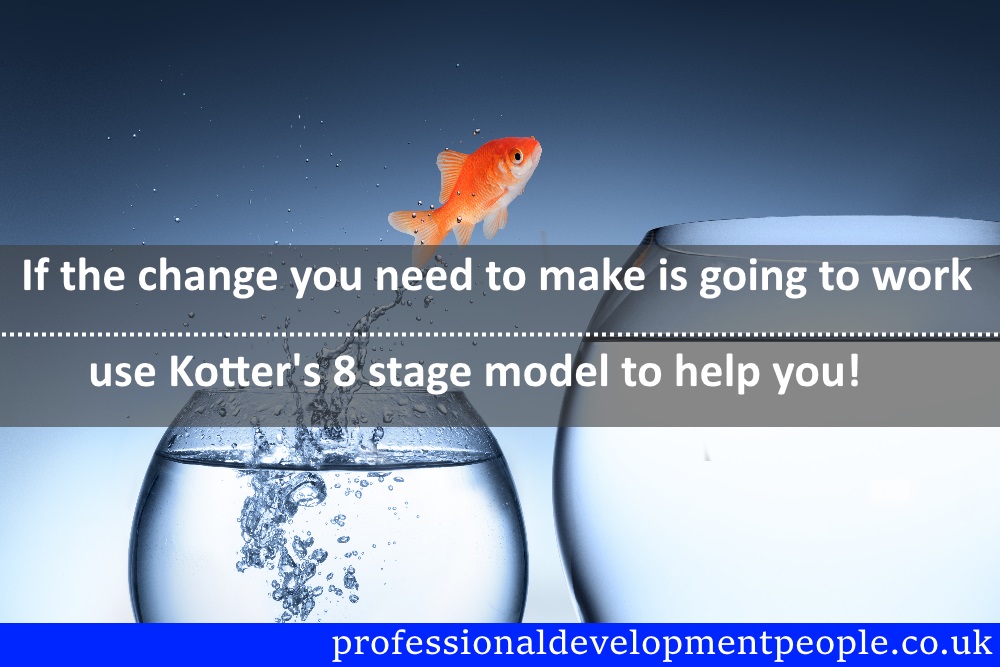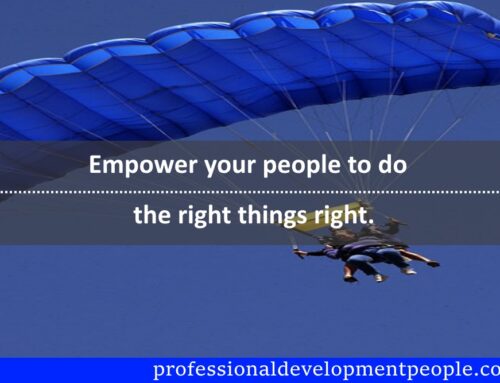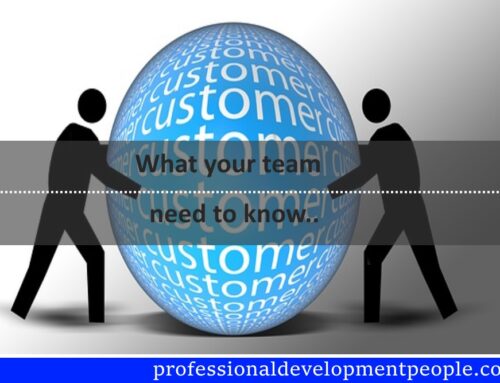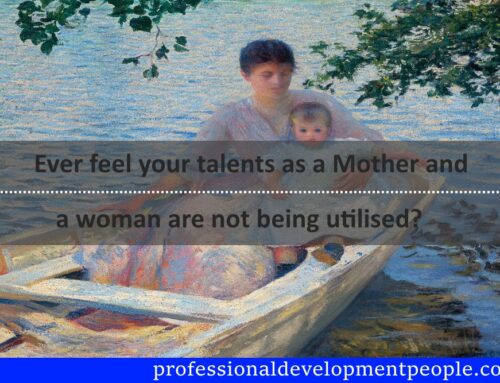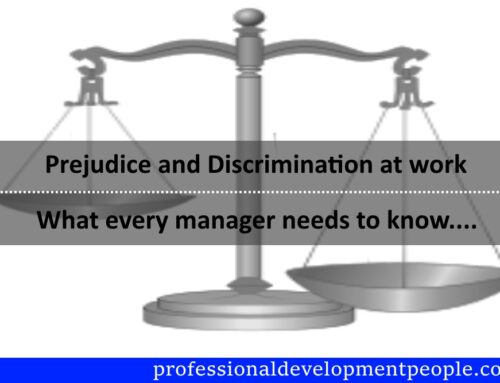Change – Make it happen using Kotter’s 8 stage model
In our last blog we explored the things that need to happen before you try to apply this really useful model. We looked at the importance and skills of objective setting, the application of PESTLE to clarify your thinking. Click here to see that blog.
Once you have that vision and have applied the PESTLE analysis to it, you can progress to using Kotter’s 8 stage model.
1 Create a sense of urgency
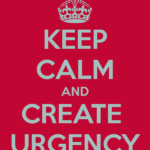 Identify Market and competitive realities
Identify Market and competitive realities
Identify and discuss crisis, potential crisis and major opportunities
Often this is where leaders will miss the opportunity to “Aim for the Heart”, they rely on the application of pure logic to convince people. Leaders that connect with people’s values are much more likely to be successful. We can use crisis as an opportunity maximiser here. “We must react and react quickly”, inaction can be fatal.
2 Build a guiding team
 Assemble a group with enough power and influence to lead the change effort
Assemble a group with enough power and influence to lead the change effort
Encourage the group to work as a team and develop team work
How many business’ assemble a team of people without the passion, power or influence to make things happen. The idea is probably a sound one but other people’s power will kill it off. We really need to have people on board with both high levels of power and positive attitudes, YOUR ALLIES.(Click here to see our blog on Influencing)
3 Develop a change vision
 Create a vision to help direct the change effort
Create a vision to help direct the change effort
Develop strategies for achieving that vision
The vision must be:
· Imaginable: They convey a clear picture of what the future will look like.
· Desirable: They appeal to the long-term interest of employees, customers, shareholders and others who have a stake in the enterprise. They help with motivation.
· Feasible: They contain realistic and attainable goals.
· Focused: They are clear enough to provide guidance in decision making.
· Flexible: They allow individual initiative and alternative responses in light of changing conditions.
· Communicable: They are easy to communicate with confidence and can be explained quickly
4 Communicate the vision buy in
 Use every vehicle possible to communicate the new vision and strategies
Use every vehicle possible to communicate the new vision and strategies
Teach new behaviours by example
communicating the vison is simple when it is;
· Simple: No techno babble or jargon.
· Vivid: A verbal picture is worth a thousand words – use metaphor, analogy and example.
· Repeatable: Ideas should be able to spread by anyone to anyone.
· Invitational: Two-way communication is always more powerful than one-way communication.
Vision 1
We hope to reduce our lead time with products and services so that we are able to facilitate the needs of our customers, employees and suppliers making their objectives central to the vision of our business resulting in synergies for everyone.
OR…………
Vision 2
We will be faster and more accurate than anyone else – satisfying stakeholders needs.
Which one can you repeat? which one resonates? Simple! So don’t over complicate the vision.
5 Empower broad based action
 Remove obstacles to change
Remove obstacles to change
Change systems or structures that undermine the vision
Encourage risk taking, innovation, non-traditional ideas and actions
You will need to deal with the lower level managers that keep on saying “if it isn’t broken don’t fix it”. They need to be very clear that we are going forward and that they need to be “on the bus.”
6 Create short term wins
 Plan for visible performance improvements
Plan for visible performance improvements
Create those improvements
Recognise and reward employees in the improvements
This is about deliberately creating some short term wins, about celebrating their effect. At this stage we need to be really high on planning and really low on praying!
7 Don’t let up
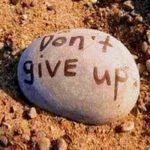 Use increased credibility to change systems, structures and policy that don’t fit the vision
Use increased credibility to change systems, structures and policy that don’t fit the vision
Hire, promote and develop “champions”
Re-invigorate the process with new projects, themes and change agents.
As the momentum is with you this is where the transformational leader uses the momentum to create even more change.
8 Make the change stick
 Articulate the connections between organisational success and the new behaviours
Articulate the connections between organisational success and the new behaviours
Develop the means to ensure leadership development and succession.
This is where we can identify the cultural change by reinforcing new values, by appointing people to the business who share those values. In this last stage we must make sure that the change is celebrated and communicated.
At PDP we are passionate about your business, your change and your views, please leave us some feedback about this blog via the comments box below……
Or contact us by email Richard or Paula
Or follow us on Twitter Richard or Paula
Or call us on 08712 349 873
We are here to help, lets get together over a coffee?

